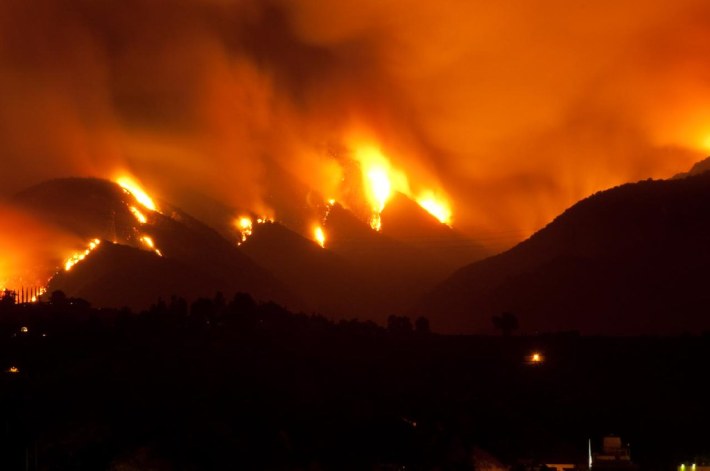
On Monday, reader M asked for some advice while traveling outside. While some readers stepped up with some good advice, I asked some of our local bike safety experts for their advice.
A couple of people took up the challenge, and in particular Shay Sanchez, the co-founder and program director of Cyclists Inciting Change through Live Exchange, wrote several suggestions which you can find here. Sanchez writes:
L.A. summer smog is bad enough, but throw a giant ash plume into the mix and it's time to take a serious look at keeping your lungs happy.
- Find alternatives to biking. (Whoa! Did I just write that??!!) The air is laden with smoke and health experts are advising that we minimize our exposure to air pollutants by not engaging in outdoor physical activities. This, of course, includes city bicycling. The risks to your health can be serious, especially if you're grappling with asthma or another respiratory or cardiovascular health challenge. So if you can, think about finding an alternative to bicycling. Consider riding public transit, car-pooling, hailing a taxi, or even renting a car during this time (if you're currently car-free).
- Take it easy. If you are going to ride, reduce your effort. During aerobic exercise (even at low-intensity) you may breathe as much as 10 times more air than you do when at rest. So it makes sense to s-l-o-w it down. Be aware that at lower speeds the speed differential between you and overtaking traffic increases, possibly increasing the risk for a collision. Be alert. Better yet, choose lower speed street alternatives whenever possible. Another benefit to streets that carry lower traffic volumes is that they feature lower air pollution levels in general. Pollution levels are likely to start decreasing at 50 feet from a main arterial.
- Keep it short. If you are going to ride, limit the length of your journey. Many of our trips are 2 miles or less, so this should be pretty easy for many of us. For longer trips, see if you can shorten the bike portion of your trip by incorporating multi-modal options such as bus and/or train.
- Wear a mask. Another helpful option is to wear a filtering face mask. Be sure that it's a carbon-impregnated face mask, which are known to be helpful in reducing the amount of air pollution that enters the lungs. Your mask should fit your face well, with almost no gaps between you nose and mouth.
For advice from Joe Linton, Roadblock and Ron Milam, read on after the jump.
After an obligatory shot at car-culture, Linton, chair of the Green L.A. Transportation Working Group and LACBC co-founder, offers advice for cyclists and a link to some advice to keep kids safe:
I guess I'd start with the big picture. I suspect that there are causal connections betwen our driving and the fires. Auto emissions are a major part of what's heating up the planet. In order to park and to drive, we've paved over our landscape with impermeable surfaces, breaking water cycles, shrinking groundwaters and causing desertification. Combine these with Southern California's natural fire cycles and you get the devasting fire events including what we're seeing right now. The big picture remedies include not driving, and working to heal our watersheds.All that said, what I can say about the day-to-day stuff seems pretty ordinary: if you're a cyclist living in a highly impacted are, go easy this week. Take the bus, drive some if you need to. Crash at your friend's place on the west side. And when the smoke clears, redouble your commitment to staying out of cars.
My creekfreak blog mate Jessica wrote about the fires, including links to natural history information. My comments there include links to Ilsa Setziol's writings - including one on how to take precautions for kids, who are more vulnerable.
Roadblock, one the leaders of the Midnight Ridazz and the Wolfpack Hustle, offers advice for riders who are going to brave the smoke on longer trips:
The wind is important to planning your trip. Guage the wind and terrain. The idea is to stay upwind from the smoke at all times. Barring that, if possible, try to take downhill routes in the smokey areas and try to place the the uphill portion of your route upwind of the fires. It might mean adding 10 or 15 miles to your route in the same manner that sailboats zig and zag across the ocean using triangular routes against the current of the wind to reach their destination. If all else fails hit the subway or take the bus.
Last but not least, Ron Milam, another LACBC co-founder and a consultant with Ron Milam consulting, offers his sage advice:
This is what the air quality was like when I grew up in L.A., which makes me appreciate how far we've come as a region to clean our air. I continue to ride during the fires and am intentionally riding a little slower so I don't breathe as hard.





